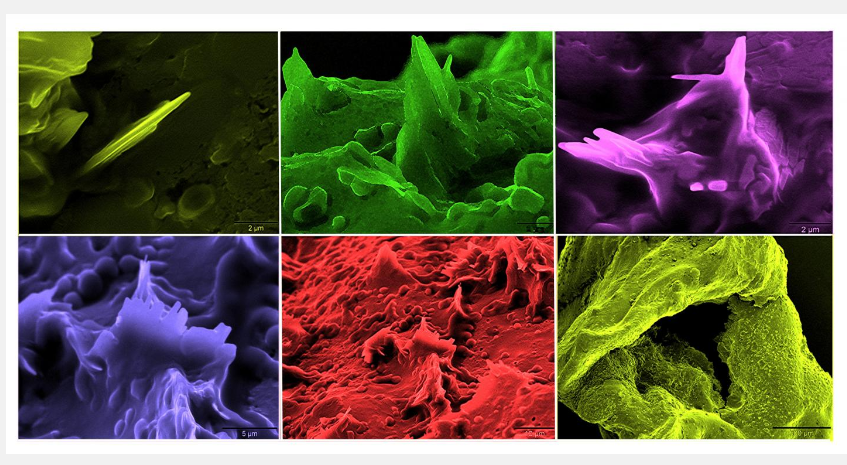You are in your doctor’s office getting lab results. The results say your cholesterol – Total and LDL levels – are “out of range” or “high.” What does that mean? Doesn’t cholesterol have something to do with heart attacks or strokes? Aren’t there drugs out there for this? What am I supposed to do now?
Let’s start with some basic information.
What is cholesterol?
I will begin the explanation by illustrating cholesterol creation with a meal that is plant-exclusive. That means there are no animal products or animal by-products such as eggs, milk, or cheese as a component of the meal.
When you eat this food, your liver takes some carbohydrates and proteins from your food and metabolizes them into a type of cholesterol and sends this cholesterol into the bloodstream. After some chemical changes the cholesterol becomes LDL cholesterol. This is the same LDL that is listed on your lab results. LDL transports necessary materials to cells such as adrenal glands, gonads, and muscle cells.[1] [2]
Those cells use the materials to complete several functions including metabolizing hormones such as testosterone and estrogen, Vitamin D; bile acids – which allow for the digestion of fats; and maintain cell membranes. Any cholesterol left goes back to the liver and becomes High Density Lipoprotein [HDL], also a value on your lab results. HDL removes forms of cholesterol from the bloodstream. Another way to think of it is that LDL is a UPS or FedEx truck dropping off packages.[3] After the packages are delivered, LDL goes back to the liver. The HDL molecules are like garbage trucks that pick up the refuse from the LDL packages. When you are not eating any cholesterol, just making it in your liver, this system usually works well.
Why do animal foods raise cholesterol?
When you add animal products to the mix you immediately add more cholesterol. As previously stated, you make cholesterol in your liver. Any living being with a liver – mammals, sea mammals, fish, amphibians, reptiles, poultry, and fowl makes cholesterol, and eating it increases your body’s cholesterol level. While insects technically do not have a liver, crickets, for example, have equivalent cholesterol levels equal to most commercial meat products.[4] Additionally, animal by-product ingredients – eggs, milk, and cheese contain cholesterol. Also, the saturated fats in tropical oils such as palm and coconut oil increase LDL levels.
How does cholesterol cause heart disease?
Cholesterol is a waxy, sticky substance. When it is drifting through your veins at a healthy volume, you do all the great things listed above. But, when the level is higher, it can stick to the side of your arteries. Your arteries are lined with these thin “endothelial cells”. Endothelial cells are about 10,000 times thinner than a piece of paper. Cholesterol sticking to the endothelial cell begins the plaque-building process. More and more cholesterol molecules stick together like pieces of tape streaming by and finding each other. This process takes years to become a problem. However, during those years, the cholesterol changes and becomes hard. It crystallizes.

Here’s a photo of those crystals thanks to Michigan State University. This hardening of the artery crystals is also known as atherosclerosis.
They are hard like rock candy with sharp edges. The crystals literally poke through the endothelial cell creating a small cut. The layer becomes inflamed and leaky. Also, when that cholesterol cuts and embeds into the arterial wall, the body reacts by sending white blood cells to plug the hole. Same as creating a scab on your cut knee. Only this is on the inside.[5] The cut can have pus inside. A surgeon I spoke to said, “Think of cottage cheese.” Yum. If you have a C-reactive protein,[CRP], listed as a value on your lab test that shows the level of inflammation in your system. A high CRP is associated with the development of atherosclerosis. The scab continues to grow as more cholesterol sticks to it. This can kill the endothelial cell.
Why do I need endothelial cells?
Endothelial cells emit the gas Nitric Oxide [NO2]. Think of the gas canister that blows up balloons. That canister contains NO2. The NO2 emitted from the endothelial cell does the same thing for your arteries that the gas canister does for the balloon – it makes them open and wide. This allows for an easier flow of blood.
Another property of cholesterol crystals is their expansion. These crystals expand like water expanding into ice. The expansion can tear the artery stopping blood flow by releasing a clot of crystals and pus.
If the clot goes to the brain, you have a stroke. If it goes to the heart, you have a heart attack.
In fact, a study at Michigan State University showed that 89% of coronary artery patients who had suffered a heart attack had an excessive quantity of these crystals. The other 11% of patients who had atherosclerosis, but few crystals died from other circumstances, not heart attacks.[6] Are you the 89% or 11%?
I don’t think it takes a rocket scientist or a wizened dietitian to conclude that “if eating something makes you sick, don’t eat it.”
I do have a protocol to cipher out whether you are one of the 1-2% of people in the world with naturally high cholesterol or whether you can turn this around yourself. Contact me if you have any questions.
If you have high cholesterol and are concerned about heart disease, the first thing to do is stop eating it as much as possible and check your alcohol and sugary food intake. [See my article How can I lower my cholesterol?]
Realize that you have the power to make great changes in your health every time you lift your fork.
[1] Venugopal SK, Anoruo MD, Jialal I. Biochemistry, Low Density Lipoprotein. [Updated 2023 Apr 17]. In: StatPearls [Internet]. Treasure Island (FL): StatPearls Publishing; 2023 Jan-. Available from: https://www.ncbi.nlm.nih.gov/books/NBK500010/
[2] Zampelas A, Magriplis E. New Insights into Cholesterol Functions: A Friend or an Enemy? Nutrients. 2019 Jul 18;11(7):1645. doi: 10.3390/nu11071645. PMID: 31323871; PMCID: PMC6682969.
[3] Harvard Health. (2017, February 6). How it’s made: Cholesterol production in your body. https://www.health.harvard.edu/heart-health/how-its-made-cholesterol-production-in-your-body
[4] Payne CL, Scarborough P, Rayner M, Nonaka K. Are edible insects more or less ‘healthy’ than commonly consumed meats? A comparison using two nutrient profiling models developed to combat over- and undernutrition. Eur J Clin Nutr. 2016 Mar;70(3):285-91. doi: 10.1038/ejcn.2015.149. Epub 2015 Sep 16. PMID: 26373961; PMCID: PMC4781901.
[5] Baumer, Y., McCurdy, S., Weatherby, T. M., Mehta, N. N., Halbherr, S. J., Halbherr, P., Yamazaki, N., & Boisvert, W. A. (2017). Hyperlipidemia-induced cholesterol crystal production by endothelial cells promotes atherogenesis. Nature Communications, 8(1). https://doi.org/10.1038/s41467-017-01186-z
[6] Abela GS, Aziz K, Vedre A, Pathak DR, Talbott JD, Dejong J. Effect of cholesterol crystals on plaques and intima in arteries of patients with acute coronary and cerebrovascular syndromes. Am J Cardiol. 2009 Apr 1;103(7):959-68. doi: 10.1016/j.amjcard.2008.12.019. Epub 2009 Feb 7. PMID: 19327423.
